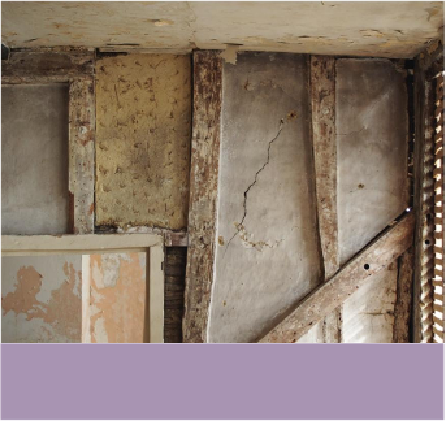Civil Engineering Reference
In-Depth Information
research is needed. Their work has led to government-driven retrofit insulation initiatives
such as the 'Green Deal' belatedly acknowledging that pre-1919 buildings are vulnerable
to harm caused by ill-conceived retrofit measures, and putting measures in place to avoid
this happening. In particular, the STBA presents evidence suggesting that buildings of tra-
ditional solid-wall construction often achieve much better thermal performance than is ex-
pected from modelling, suggesting that the payback from retrofit insulation may be less
than anticipated. They also underline the need for the development and use of
appropriate
assessments for traditional buildings, and the importance of a systemic whole-building ap-
proach when considering thermal performance, in order to minimize negative unintended
consequences of retrofit measures.
1
As a breathable natural material, hempcrete works in harmony with the existing fabric in
older solid-wall properties, while improving the thermal performance of walls that were
not usually built from highly insulating materials. Hempcrete was originally developed as
a breathable, insulating replacement material for wattle and daub - the mix of earth, straw,
dung and occasionally lime woven into a hazel, willow or ash framework to create walls
in ancient timber-frame buildings. As well as this specific use, it has a number of other
practical applications in the repair of, or retrofitting of insulation to, heritage properties.
An overview of these uses is presented later in this chapter.
Hempcrete is the perfect material for repairing and in-
creasing the thermal performance of ancient timberframe
buildings, due to its hygroscopic properties.

Search WWH ::

Custom Search